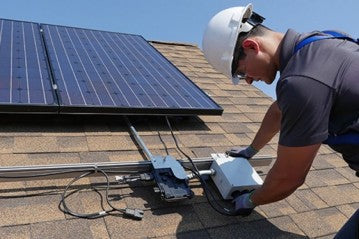
In today's rapidly advancing world, solar energy has emerged as a sustainable and efficient alternative to traditional power sources. With the increasing adoption of solar panels and the growing demand for renewable energy, it is essential to understand the factors that impact the performance and lifespan of solar batteries. One such crucial factor is temperature. In this blog post, we will explore the effects of temperature on solar battery capacity and service life and provide insights into optimizing battery performance for prolonged usage.
Temperature and Solar Battery Capacity
When it comes to solar batteries, temperature plays a significant role in determining their capacity, i.e., the amount of energy they can store. High temperatures can have adverse effects, leading to reduced available capacity, increased self-discharge rate, and accelerated aging. On the other hand, low temperatures can decrease chemical reactions and overall capacity, hampering performance during peak power demand.
Solar batteries are designed to operate optimally within specific temperature ranges. Exposing them to extreme temperatures, whether hot or cold, can result in diminished capacity and shorter service life. Hence, it is essential to choose a solar battery that suits your geographical location and climate.
Temperature and Solar Battery Service Life
The service life of a solar battery refers to its overall lifespan and the duration it can consistently deliver its rated performance. Just as high temperatures impact capacity, they can also accelerate the degradation of active materials, increase internal resistance, and elevate self-discharge rates. These factors collectively reduce the overall service life of the battery.
Similarly, low temperatures can slow down chemical reactions, leading to decreased capacity during discharge. Moreover, freezing temperatures pose a risk of mechanical damage to the battery. Therefore, it is crucial to consider the temperature range in which your solar battery will operate to ensure optimal performance and longevity.
Optimizing Battery Performance in Extreme Temperatures
To maximize the performance and lifespan of solar batteries in extreme temperature conditions, several strategies can be employed:
1. Thermal Management Systems: Implementing thermal management systems, such as active cooling or heating mechanisms, can regulate the battery's internal temperature and prevent excessive heat or cold from affecting its performance.
2. Proper Ventilation and Cooling: Ensuring adequate airflow around the solar battery and providing proper cooling mechanisms, such as fans or heat sinks, can help dissipate heat generated during operation and maintain optimal temperature levels.
3. Battery Placement Considerations: Installing solar batteries in shaded areas or areas with good ventilation can help mitigate the impact of high temperatures. Additionally, avoiding direct sunlight or placing the battery in temperature-controlled environments can aid in temperature regulation.
4. Battery Insulation and Heating: In colder climates, insulating the solar battery and utilizing heating methods, such as electric heating pads or integrated heating systems, can help maintain the battery's temperature above freezing levels and prevent capacity loss.
5. Avoiding Deep Discharges in Cold Conditions: During chilly weather, it is advisable to avoid deep discharges as they can lead to rapid capacity loss. Instead, consider charging the battery more frequently to keep it at optimal levels.
Battery Maintenance and Care
Regular monitoring and maintenance routines are vital for preserving the performance and extending the service life of solar batteries. Here are some best practices:
1. Periodic Inspections: Regularly inspect the solar battery for signs of damage, corrosion, or excessive wear. Address any issues promptly to prevent further deterioration.
2. Cleaning: Keep the battery and its surroundings clean and free from debris, as dirt accumulation can hinder proper ventilation and cooling.
3. Battery Storage: If you live in an area with extreme temperature fluctuations, consider storing your solar battery indoors during periods of extreme heat or cold to protect it from harsh conditions.
Conclusion
Understanding the impact of temperature on solar battery capacity and service life is crucial for customers seeking to invest in solar energy-related products. By optimizing battery performance in extreme temperature conditions through proper maintenance, temperature regulation, and strategic placement, users can maximize their solar battery's capacity, lifespan, and overall return on investment. Remember, a well-cared-for solar battery ensures reliable and sustainable energy storage, paving the way for a greener future.
So, whether you're considering installing solar panels for your home or expanding your solar energy system, make sure to pay attention to temperature effects on solar battery performance to unlock the full potential of clean and renewable energy.
At Ecgsolax, we understand that the heart of any solar power system lies in the quality of its solar batteries. That's why we are dedicated to manufacturing high-performance solar batteries that deliver exceptional power output and durability.
Whether you’re looking for Powerwall Battery, Stacked Battery, or High Voltage Battery, we’ve got you covered.
So, why wait?
If you have any questions about our solar batteries or other products, don’t hesitate to contact us. We’d love to discuss your solar power needs and help you make an informed decision.

0 Kommentare